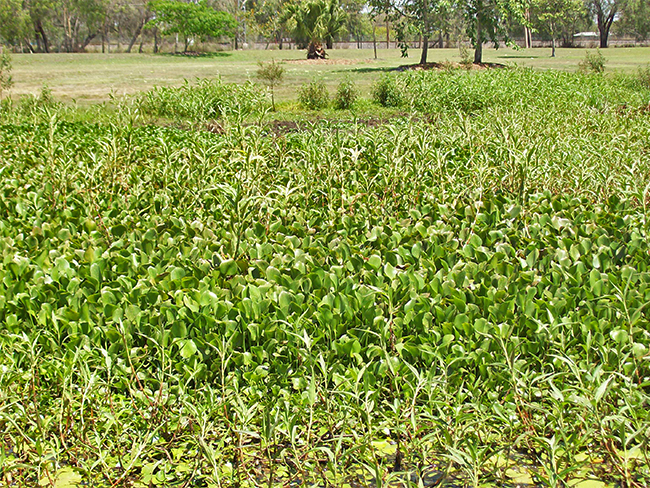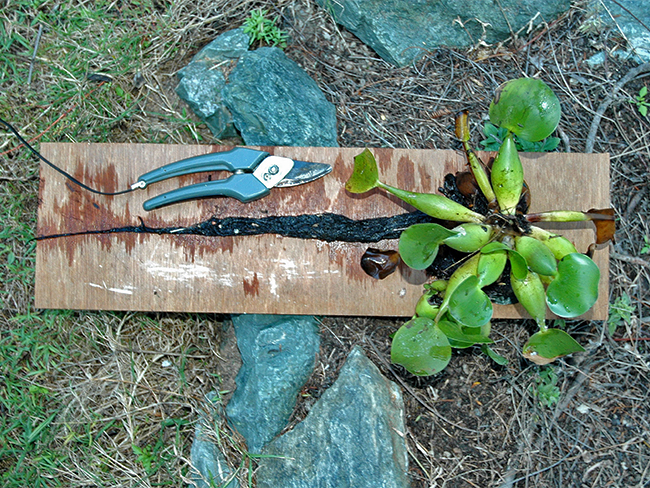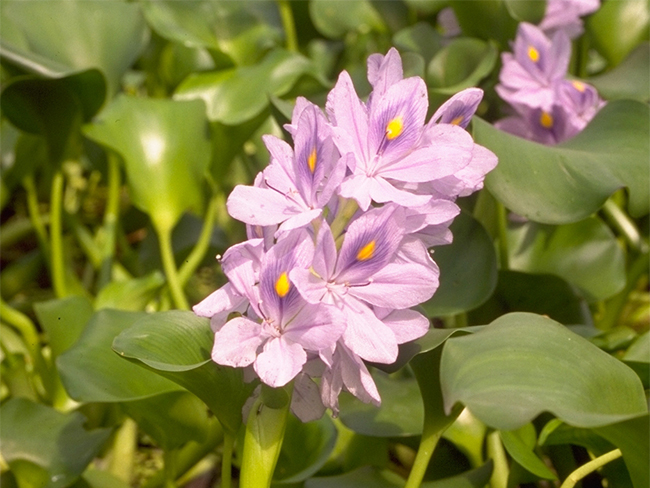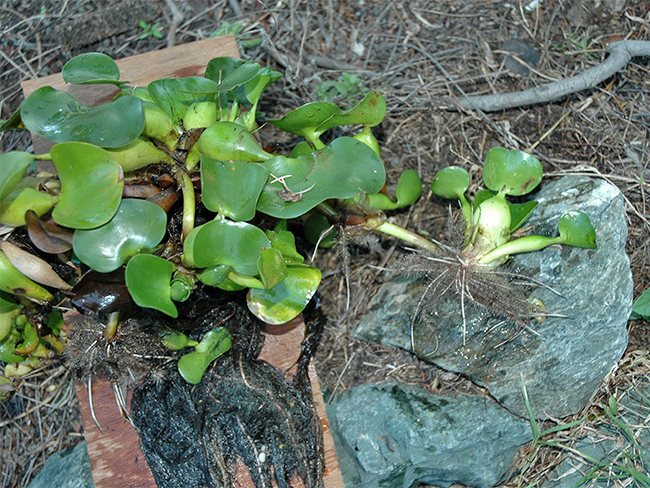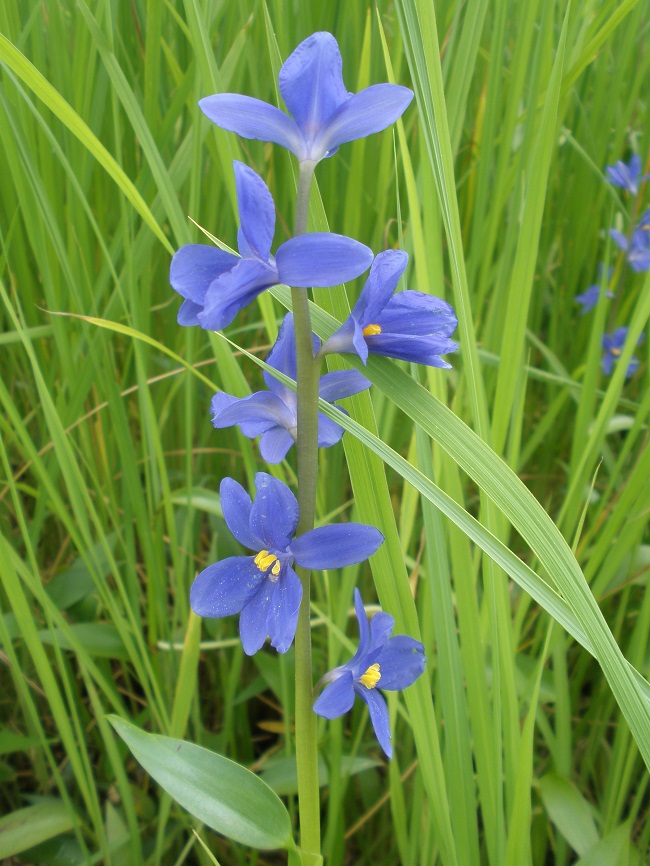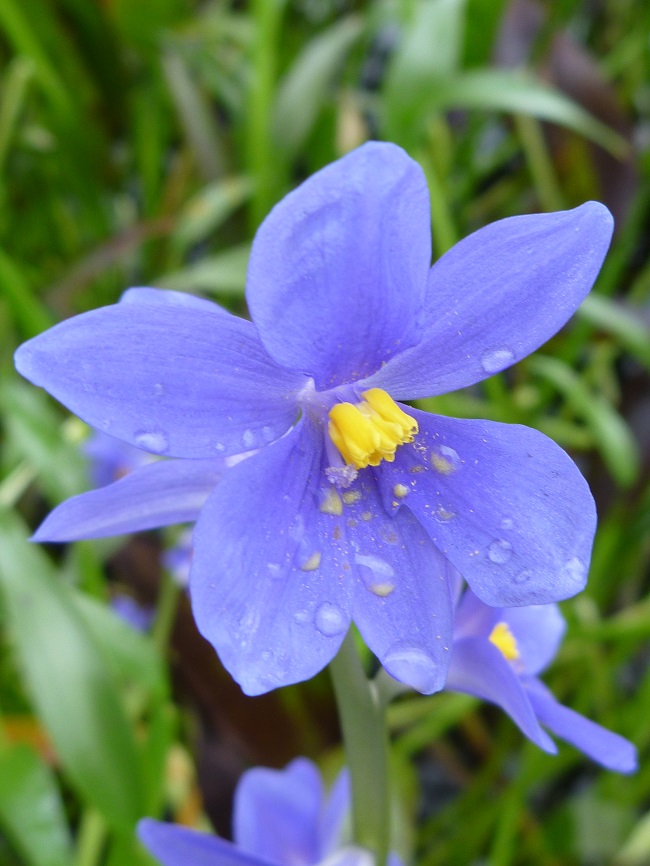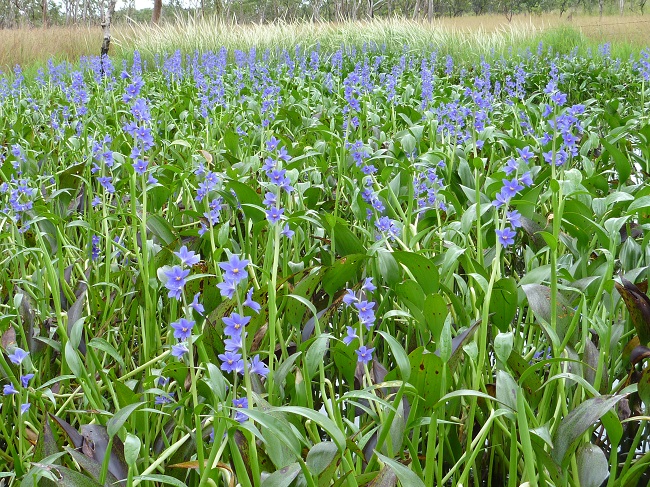Water hyacinth
Scientific name: Eichhornia crassipes
Declaration status: Class A
Water hyacinth is a Weed of National Significance. For more information, go to the Australian Government's Department of Environment website.
Water hyacinth is native to Brazil, and was introduced into Australia in the 1890s as an ornamental plant for ponds and aquariums.
It was established in coastal Queensland and New South Wales where it prefers fresh, static or slow flowing water with high organic content.
Six infestations have been recorded and eradicated in the Northern Territory (NT).
There are currently no known establishments in the NT.
For more information get the water hyacinth identification fact sheet PDF (1.1 MB).
Impact
Water hyacinth can have all of the following impacts:
- aggressive invader of permanent freshwater bodies
- can grow quickly to form large, dense mats over the water surface
- infestations can double in size in a few weeks
- a single plant can reproduce to cover 600m2 in one year
- can destroy freshwater wetlands and the native plants and animals that live in them
- can block waterways and reduce water quality, increase water storage of dams and interfere with irrigation
- can restrict recreational activities including swimming, boating and fishing
- can create an environment that encourages mosquito breeding.
Identification
You should use this as a guide. There may be other plants or weeds that look similar.
- upright, free-floating aquatic plant sometimes rooted in shallow water and grows to 60cm high
- leaf stalks have a distinctive bulbous, inflated base that allows them to float on water
- young plants have leaf stalks up to 25cm long whereas older plants have leaf stalks to 60cm long that no longer float
- roots are feathery, black to purple and up to 1m long, however roots can be short if water is nutrient rich
- leaves are spoon-shaped, fleshy, shiny and vibrant green on dark green stems
- flower heads grow on a single stem and are 5cm to 35cm, bluish purple or white in colour
- seeds are ovate-oblong, ribbed and about 1mm long.
If you are unsure, contact the Weed Management Branch.
Similar looking plants
There are four native species of aquatic plants in the genus Monochoria which look similar to water hyacinth.
However, if you think you may have seen water hyacinth, or have this weed on your property, don't attempt to control it.
Contact the Weeds Management Branch immediately for assistance.
Control
If you think you may have seen water hyacinth, or have this weed on your property, do not attempt to control it.
Contact the Weed Management Branch immediately for assistance.
Water hyacinth is on the alert list for environmental weeds. This is a list of weeds that threaten biodiversity and cause other environmental damage.
Give feedback about this page.
Share this page:
URL copied!
